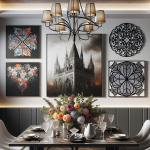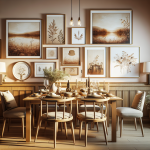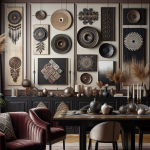Cartoon faces have been an integral part of animation and art for centuries, continually evolving to captivate audiences with their expressive and dynamic characters. From the earliest hand-drawn animations to modern computer-generated imagery, the evolution of cartoon faces has been a fascinating journey filled with creativity and innovation. Let’s delve into the history of animation and art to uncover the evolution of cartoon faces and their impact on popular culture.
The Birth of Animation
The history of cartoon faces can be traced back to the birth of animation in the late 19th century. One of the earliest pioneers of animation was French artist Emile Cohl, who created the first hand-drawn animated film, “Fantasmagorie,” in 1908. Cohl’s whimsical and surreal animation style featured simple, exaggerated characters with expressive faces that captivated audiences around the world.
As animation techniques advanced, artists began experimenting with more intricate character designs and facial expressions to convey emotions and tell compelling stories. With the introduction of synchronized sound in the 1920s, cartoon faces became even more expressive, allowing for a deeper connection between the characters and the audience.
The Golden Age of Animation
The 1930s marked the beginning of the Golden Age of Animation, with iconic studios like Walt Disney Productions and Warner Bros. leading the way in creating beloved cartoon characters such as Mickey Mouse, Bugs Bunny, and Popeye. These characters featured exaggerated facial expressions and dynamic movements that brought them to life on the big screen, captivating audiences of all ages.
During this time, animators perfected the art of creating expressive cartoon faces, using techniques such as squash and stretch to give characters a greater range of motion and emotion. The use of dialogue and music further enhanced the storytelling capabilities of animation, allowing for complex character development and nuanced performances.
The Rise of Computer Animation
In the 1990s, the rise of computer animation revolutionized the way cartoon faces were created and animated. With advancements in technology, animators were able to achieve more realistic and detailed character designs, allowing for a greater level of expression and emotion in their work.
One of the most significant advancements in computer animation was the development of facial rigging, a technique that allows animators to manipulate a character’s facial expressions with precision and control. This technique has been instrumental in creating lifelike characters in films like “Toy Story,” “Shrek,” and “Frozen,” bringing a new level of realism to animated storytelling.
The Future of Cartoon Faces
As technology continues to advance, the future of cartoon faces looks brighter than ever. With the rise of virtual reality and augmented reality, animators have new tools at their disposal to create immersive and interactive experiences for audiences. The possibilities are endless, with animated characters able to interact with viewers in real-time and respond to their emotions and actions.
Furthermore, the popularity of streaming platforms like Netflix and Disney+ has opened up new avenues for animated content, allowing creators to reach a global audience with their stories and characters. The demand for high-quality animation continues to grow, with audiences of all ages seeking out engaging and compelling content that features dynamic and expressive cartoon faces.
Conclusion
The evolution of cartoon faces is a testament to the creativity and innovation of artists and animators throughout history. From the early days of hand-drawn animation to the modern era of computer-generated imagery, cartoon faces have continued to captivate audiences with their expressive and dynamic characters. As technology continues to advance, the future of animation and art looks brighter than ever, with endless possibilities for creating immersive and interactive experiences for audiences around the world.
FAQs
What are some key milestones in the evolution of cartoon faces?
Some key milestones in the evolution of cartoon faces include the introduction of synchronized sound in the 1920s, the development of facial rigging in computer animation, and the rise of virtual reality and augmented reality technologies.
How do animators create expressive cartoon faces?
Animators use a variety of techniques to create expressive cartoon faces, including squash and stretch, facial rigging, and detailed character designs. These techniques allow animators to convey emotions and tell compelling stories through their characters.
What is the future of cartoon faces in animation?
The future of cartoon faces in animation looks bright, with advancements in technology opening up new possibilities for immersive and interactive storytelling. Animators have the tools to create lifelike characters that can interact with audiences in real-time, creating engaging and compelling experiences for viewers of all ages.
Cartoon faces have come a long way since the early days of hand-drawn animation, evolving into dynamic and expressive characters that continue to captivate audiences around the world. With the ongoing advancements in technology and storytelling, the future of cartoon faces in animation looks promising, with endless opportunities for creativity and innovation.








+ There are no comments
Add yours